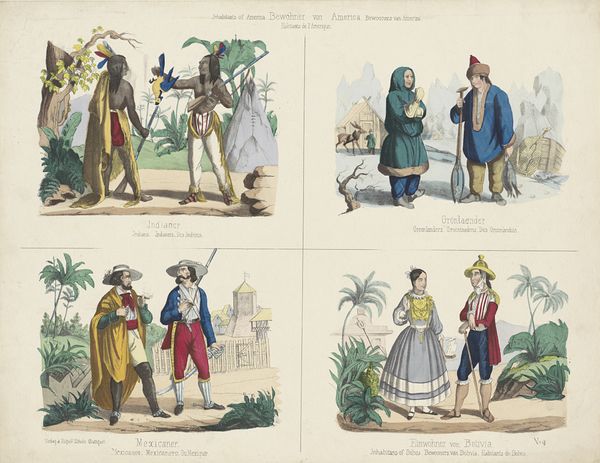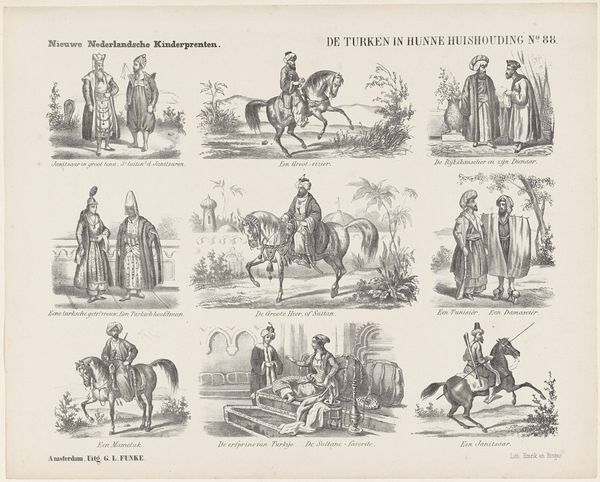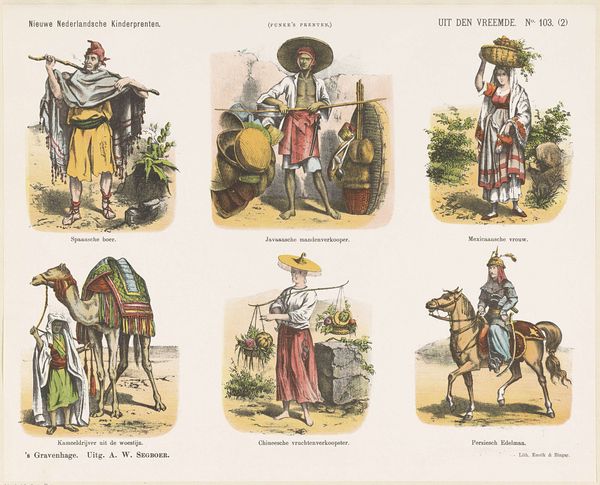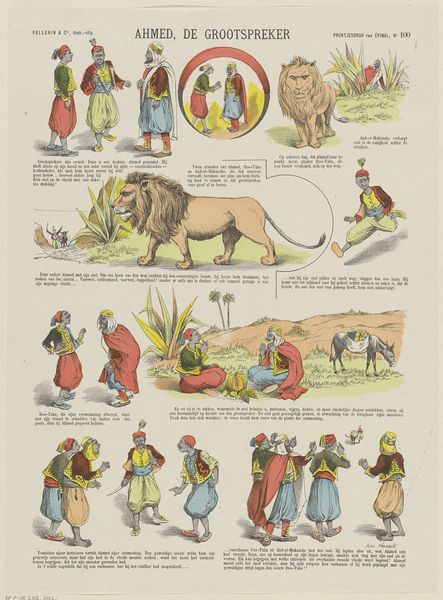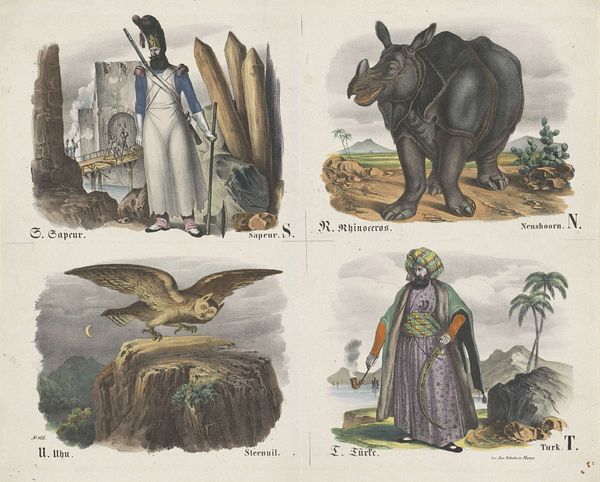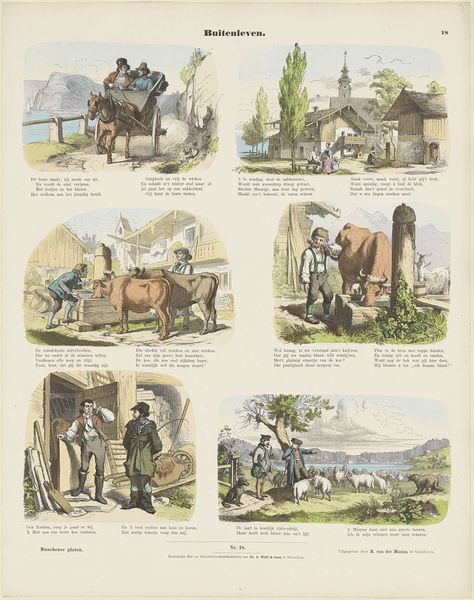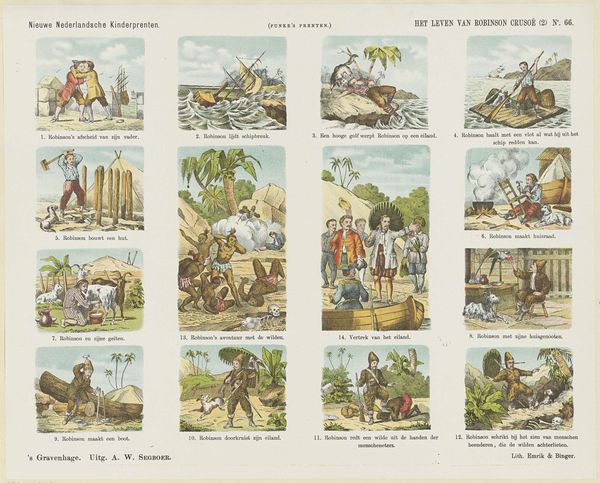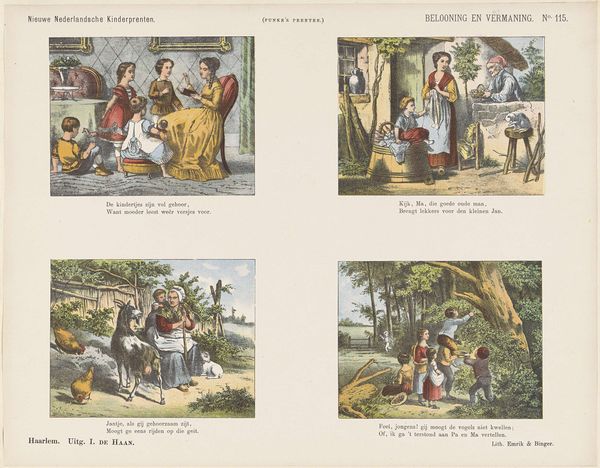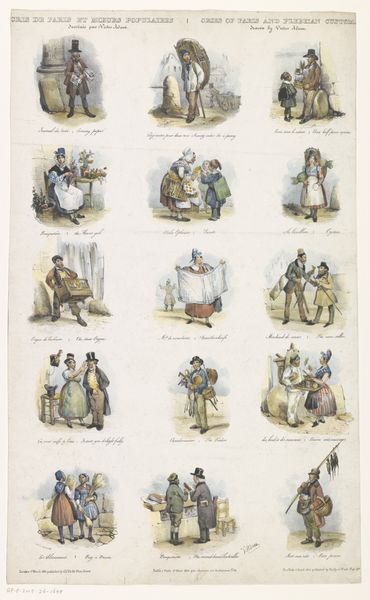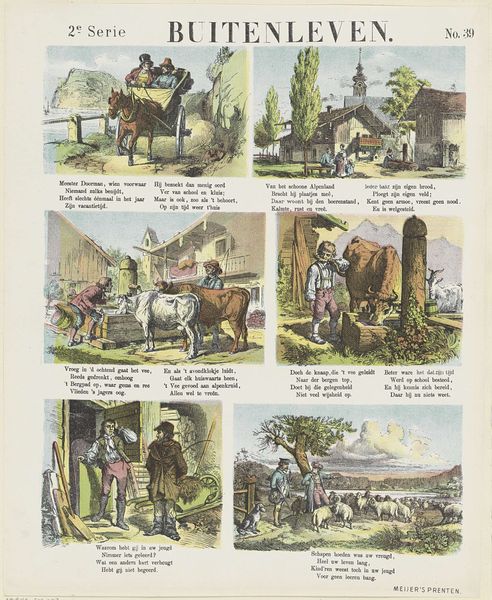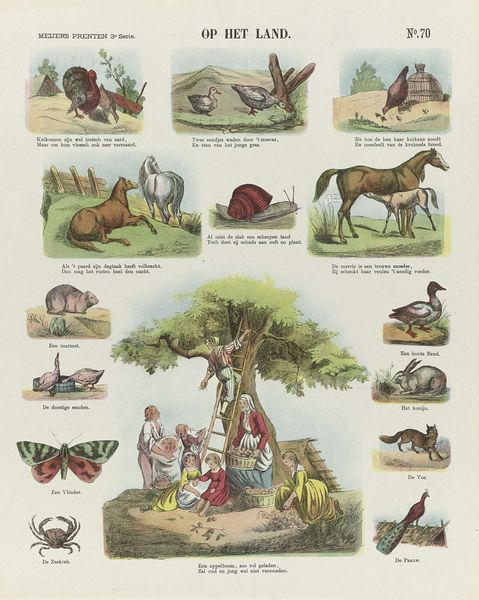
lithograph, print
#
narrative-art
#
lithograph
# print
#
orientalism
#
islamic-art
#
genre-painting
Dimensions: height 344 mm, width 442 mm
Copyright: Rijks Museum: Open Domain
Curator: So, here we have “De Turken in hunne huishouding,” or “The Turks in their household,” a lithograph print dating from between 1875 and 1903 by Jan de Haan. Editor: It’s a fascinating grid of images! Each little scene gives us a glimpse into what someone at the time imagined as typical Turkish life. The colors are soft, almost dreamlike. What jumps out at you when you look at this, from a historical perspective? Curator: It’s that word "imagined" that's key here. We are peeking into a world seen through the lens of Orientalism. These images are less about reality and more about constructing a vision of the "other." Do you notice how each vignette seems to highlight a particular role or stereotype? Editor: Yes! We've got soldiers, scholars, what looks like a Sultan… almost like a catalogue of Turkish figures. Are these representations accurate or exaggerated? Curator: That’s the million-dollar question, isn’t it? These images were created to be entertaining and "educational" to a Western audience, meaning accuracy often took a backseat to spectacle and reinforcing existing cultural biases. Look at the poses, the clothing… Do you think it strives for neutrality? Editor: Absolutely not. The figures are quite theatrical, almost like actors on a stage. It’s interesting, though – even with its biases, it gives us insight into the mindset of the time. I wouldn't have thought of it as an example of narrative art. Curator: Precisely! It reveals far more about Dutch society's fascination with the "Orient" than it does about actual Turkish culture. See, even problematic art has lessons to teach us.
Comments
No comments
Be the first to comment and join the conversation on the ultimate creative platform.
